In the complex world of healthcare economics, patient lifts stand out as a prime example of how initial investments can lead to substantial long-term benefits. These essential devices, crucial for safe patient handling, represent more than just a cost on a balance sheet—they're a strategic investment in patient care, staff well-being, and overall healthcare efficiency. This comprehensive analysis delves into the multifaceted economic aspects of patient lifts, exploring their costs, long-term savings, insurance considerations, and the value they bring to both institutional and home care settings. Whether you're a healthcare administrator, a home caregiver, or a patient considering a lift, understanding the economics behind these devices is crucial for making informed decisions that balance quality care with financial prudence.
The Evolution of Patient Lift Economics: From Cost Center to Value Generator
The perception and economic evaluation of patient lifts have undergone significant changes over the years, reflecting broader shifts in healthcare economics.
Traditional Economic View
- Seen primarily as a capital expense
- Focus on upfront equipment costs
- Limited consideration of long-term benefits
- Viewed as optional in many care settings
Modern Economic Perspective
- Recognized as an investment in safety and efficiency
- Emphasis on long-term cost savings and ROI
- Consideration of broader economic impacts (e.g., reduced worker injuries)
- Increasingly viewed as essential equipment in healthcare
- Integration into comprehensive safe patient handling programs
Key Economic Considerations for Patient Lifts
Critical Factors in Patient Lift Economics
- Initial Investment: Equipment costs, installation, and staff training
- Long-Term Savings: Reduced worker injuries and associated costs
- ROI Potential: Typical returns of 19% or more on investment
- Insurance Coverage: Varies by setting and provider policies
- Operational Efficiency: Improved patient handling speed and safety
- Staff Retention: Reduced turnover due to improved working conditions
- Patient Outcomes: Potential reduction in patient injuries and care costs
- Maintenance Costs: Ongoing expenses for upkeep and repairs
Economic Analysis of Patient Lift Options

Hoyer Advance-E Power Lift
An electric lift offering efficiency and ease of use, potentially reducing long-term labor costs.
- Higher initial investment, typically $3,000-$15,000
- Reduced physical strain on caregivers, potentially lowering injury-related costs
- May require more maintenance but offers greater efficiency
- Potential for faster ROI in high-use settings

Hoyer Manual Hydraulic Lift
A manual option with lower upfront costs, suitable for settings with budget constraints.
- Lower initial cost, ranging from $500-$5,000
- Minimal maintenance requirements, reducing long-term expenses
- May have slower ROI due to increased physical demands on staff
- Often fully covered by Medicare for home use

Bestlift PL350CT Full Body Patient Lift
A versatile lift offering a balance between cost and functionality for various care settings.
- Mid-range pricing, offering good value for features
- Compact design may reduce space-related costs in facilities
- Suitable for both institutional and home use, increasing cost-effectiveness
- Potential for partial insurance coverage in home settings
Economic Impact Across Healthcare Settings
1. Hospitals and Acute Care Facilities
In hospital settings, patient lifts can significantly reduce worker injuries, potentially saving millions in workers' compensation costs. One study found that a hospital's $800,000 investment in lifting equipment and training resulted in $2.2 million in savings over five years, demonstrating a substantial return on investment.
2. Long-Term Care Facilities
Nursing homes and assisted living centers can see significant economic benefits from patient lifts, including reduced staff turnover, lower insurance premiums, and decreased patient injury-related costs. The consistent use of lifts can lead to long-term operational cost reductions.
3. Home Healthcare
For home use, patient lifts can reduce the need for additional caregiving support, potentially lowering overall care costs. While the initial investment may be significant for families, the long-term savings in preventing caregiver injuries and delaying institutional care can be substantial.
4. Rehabilitation Centers
In rehab settings, patient lifts can increase the efficiency of therapy sessions, potentially reducing the overall length of stay and associated costs. This improved efficiency can lead to better patient outcomes and increased facility throughput.
For more insights on how patient lifts impact different healthcare settings, explore our article on Patient Lifts in Institutional Settings: Hospitals, Nursing Homes, and Rehabilitation Centers.
Challenges and Strategies in Patient Lift Economics
While the economic benefits of patient lifts are clear, there are challenges to address:
High Initial Costs
The upfront investment can be a barrier, especially for smaller facilities or home users.
Variable Insurance Coverage
Inconsistent coverage policies can impact accessibility and implementation.
Long-Term Maintenance Expenses
Ongoing costs for repairs and updates need to be factored into budgets.
Staff Training Investments
Continuous education on proper use is essential but adds to overall costs.
Strategies for addressing these challenges include:
- Implementing phased equipment acquisition plans to spread costs over time
- Exploring leasing options or group purchasing agreements for better pricing
- Advocating for comprehensive insurance coverage through policy changes
- Developing in-house maintenance capabilities to reduce long-term service costs
Choosing the Right Patient Lift: Economic Considerations
When selecting a patient lift, consider these economic factors:
For more guidance on selecting the right patient lift, including economic considerations, read our article on Choosing the Right Patient Lift for Home Use: A Comprehensive Guide.
Maximizing Economic Value Through Proper Maintenance
To ensure the best economic return on patient lifts, proper maintenance is crucial. Follow these tips:
- Regular Inspections: Conduct routine checks to catch issues early, preventing costly breakdowns.
- Timely Repairs: Address problems promptly to avoid more expensive repairs or replacements later.
- Staff Training: Ensure all users are properly trained to prevent misuse and unnecessary wear.
- Scheduled Servicing: Follow manufacturer recommendations for professional maintenance to extend equipment life.
- Record Keeping: Maintain detailed maintenance logs for warranty purposes and to track long-term costs.
For more detailed information on maintaining your patient lift to maximize its economic value, refer to our guide on Patient Lift Maintenance: Essential Tips for Longevity and Safety.
Conclusion: The Economic Case for Patient Lifts
The economic analysis of patient lifts reveals a compelling case for their implementation in various healthcare settings. While the initial investment can be significant, the long-term benefits—including reduced worker injuries, improved patient outcomes, and overall operational efficiency—often result in substantial cost savings and a positive return on investment.
For healthcare facilities, patient lifts represent not just a safety measure, but a strategic economic decision that can lead to reduced workers' compensation costs, lower insurance premiums, and improved staff retention. In home care settings, while the upfront costs may be challenging, the potential for reducing long-term care expenses and improving caregiver health makes patient lifts a valuable consideration.
As healthcare continues to evolve, with an increasing focus on both patient and worker safety, the economic value of patient lifts is likely to become even more pronounced. By carefully considering the full economic picture—from initial costs to long-term savings and improved care quality—healthcare providers and individuals can make informed decisions that benefit both financial health and patient care.
Invest in Safety and Efficiency with the Right Patient Lift
Explore our range of economically sensible patient lifts designed to provide long-term value for both healthcare facilities and home use. Our expert team can help you navigate options to find the best economic fit for your specific needs.
Shop Cost-Effective Patient Lifts Now








